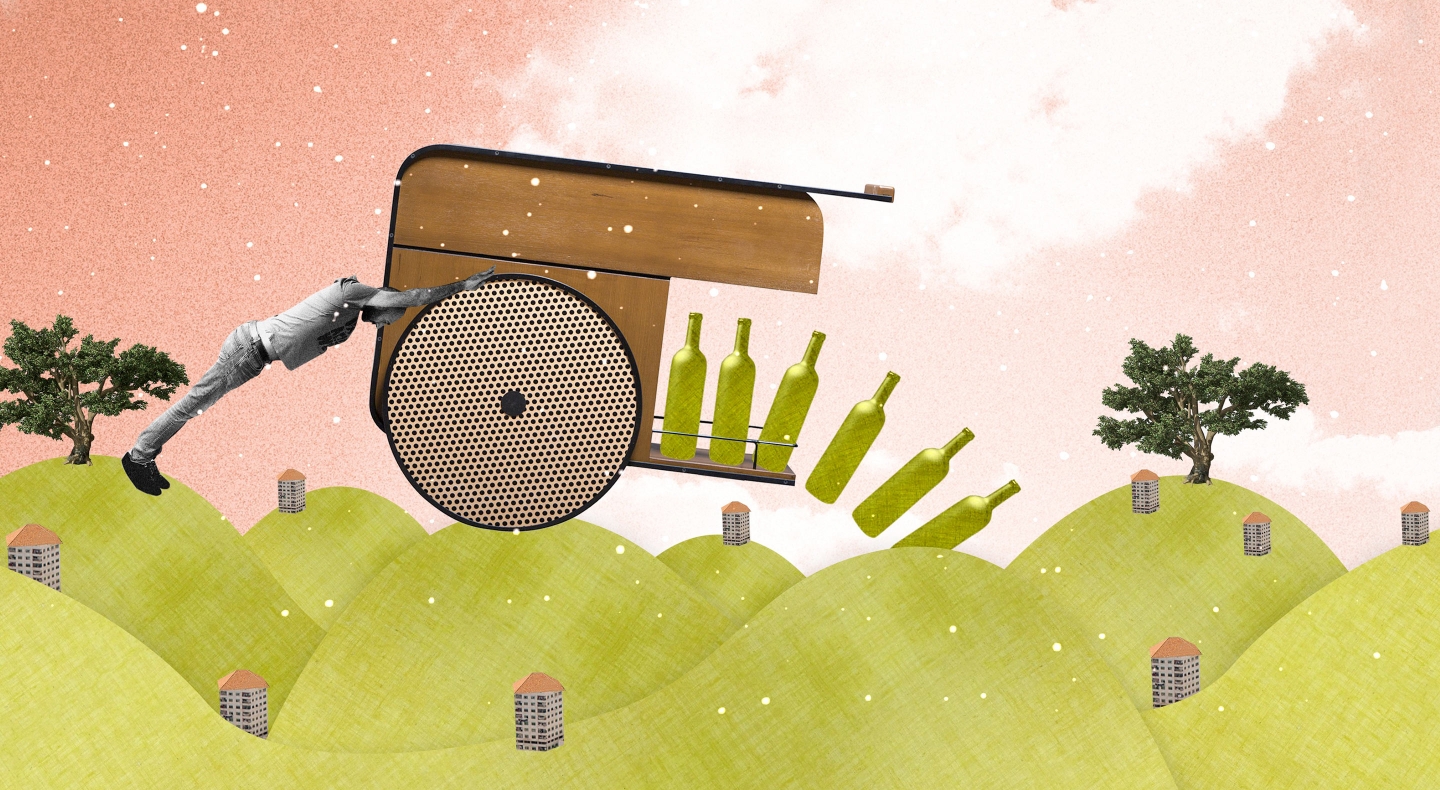Kann Design, from the Lebanese hilltops to the international arena
Published on 25 June 2019

High in the Lebanese mountains, some 15 miles east of Beirut, the village of Beit-Chabab lovingly nurtures its centuries-old traditional crafts. It was in this very spot that Houssam Kanaan, the founder of Kann Design, was born.
His father, Kanaan Kanaan, was a cabinetmaker, and Houssam grew up surrounded by sawdust and tools just 50 metres from the paternal workshop, founded in 1958. Friends living close by were craftsmen, too – upholsterers, potters, marble masons and caners, and Beit-Chabab was even home to the East’s last-surviving bell-founding family. It would be easy to believe that Houssam’s future had already been mapped out. But his father had other ideas, unwilling to see his offspring forced into what was considered a thankless profession. Taking heed of his father’s words, Houssam headed off to France to study at the ESCP, one of the country’s top business schools, passing his exams with flying colours. Yet the Lebanese mountains of his youth were always at the back of his mind. The project he worked on for his final year thesis focused on creating a design house that would sell furniture directly to customers, via the internet or self-owned brick-and-mortar stores. Kann Design was born.
“I wanted to showcase the true value of handcrafted work, which gives rise to pieces that are practically bespoke”
At the age of 26, armed with a workshop, a student loan and the love of his future wife, graphic artist and designer Meghedi Simonian, he finally got his business off the ground. He and childhood friend José Pascal set about designing their very first pieces, with Kann Design’s DNA gradually being shaped alongside the 50s-style rosewood sideboards, highly reminiscent of his father’s work. It didn’t take long for them to open their first store in the Batignolles district of Paris. “Selling direct to customers was more about giving them access to the craftsman than turning a profit. I wanted to showcase the true value of handcrafted work, which gives rise to pieces that are practically bespoke”, explains Houssam Kanaan. Their inaugural projects were lauded by the press, and customers seemed reassured by the integrated workshop. But the model of selling direct to customers soon ran out of steam, triggering the decision to start looking for retailers. In January 2015, the tiny team exhibited in the ‘now!’ zone at MAISON&OBJET. “It never even crossed our minds to start off anywhere other than at Europe’s most iconic trade fair. Exhibiting there marked a turning point in our careers, as we emerged from isolation. We met other design houses and spent a lot of time chatting about the problems we all shared to do with logistics and the market… We had some very intense discussions that week!” In January 2017, Houssam and Meghedi were enchanted by Karl Chucri and Rami Boushdid’s designs. It was the very first time the founders of Studio Caramel had exhibited at Paris Design Week, and Houssam and Meghedi had absolutely no idea that they, too, were of Lebanese origin. Kann Design produced an elegant 50s-inspired bar trolley. One year later, Studio Caramel received one of MAISON&OBJET’s Rising Talent Awards. The world was clearly witnessing the birth of a new generation of Lebanese designers. And not by pure chance. “A decade ago, the Lebanese Academy of Fine Arts launched a Master’s in product design and furniture, explains Karl Chucri. Rami and I actually trained as architects. On graduating from Alba, the Lebanese Academy of Fine Arts in Beirut, we each went on to gain a Master’s degree, me from the European Institute of Design in Madrid, and Rami from Milan’s Scuola Politecnica di Design.” They’re not interested in hearing about Arab-inspired style. “Some of the designers we use are Lebanese, adds Houssam, but it’s by no means a must.” Paris remains their hub. Houssam and Meghedi made the French capital their home 17 years ago, and their store is now based in rue de Vinaigriers, close to the Canal Saint Martin. Today, Kann boasts a network of retailers right across France and Europe. Back in Beit-Chabab, Kanaan Kanaan, now 76, perfects prototypes and processes for his son. Houssam’s brother, Samer, gave up his career as an astrophysicist in Chile to head-up the workshop, which has since been expanded. On-site, Kann Design collaborates with local upholsterers, marble masons, painters, caners and blacksmiths. “We have two workshops. One for bespoke pieces, one for standard items, and a design office dedicated to projects. We’ve just finished fitting out Jean-François Piège’s new restaurant, Clover, at the Bastide de Gordes, working in conjunction with the Notoire design agency.” From mass-produced pieces to bespoke items, the Kann team clearly have it all covered. For the first time ever, the design house will also be exhibiting at the September edition of MAISON&OBJET in addition to being present in January, this time showcasing tables and chairs. “The new ‘Let’s work together’ theme has given us lots of food for thought.”
By Caroline Tossan